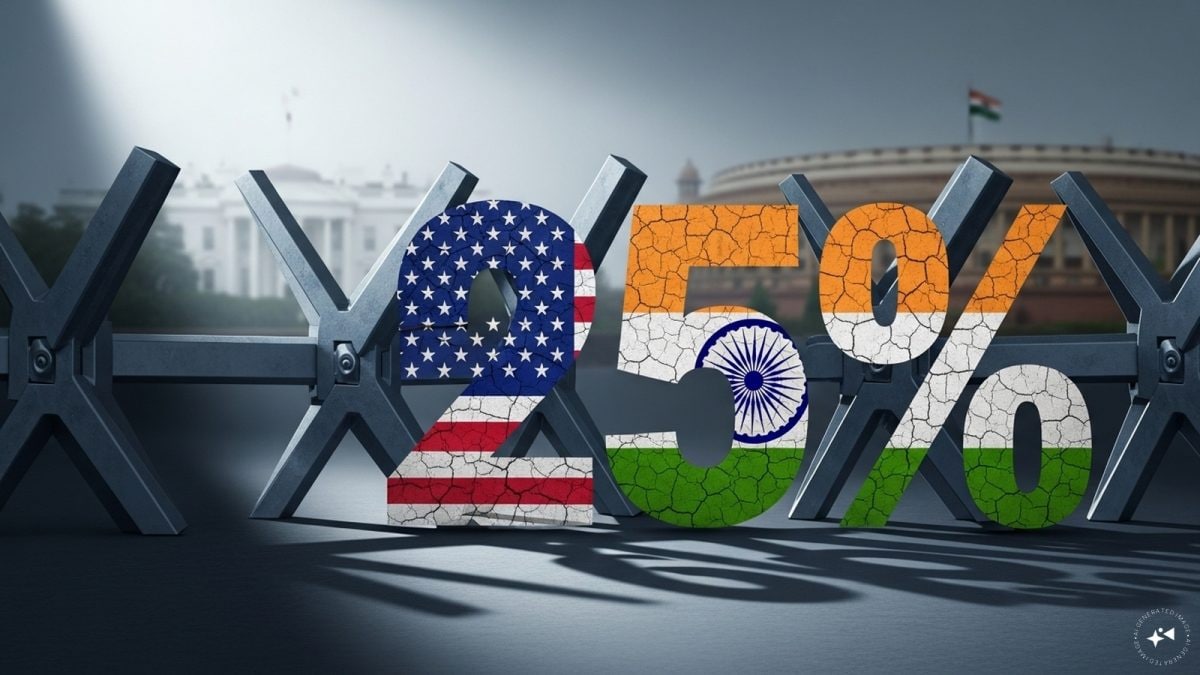

In response to US President Donald Trump's announcement of a 25% tariff on a wide range of goods from India, effective August 1, 2025, India has affirmed its commitment to "fair" trade practices while simultaneously underscoring its resolve to "secure" its national interests. The tariff, which also includes an unspecified "penalty" for India's ongoing defense and energy ties with Russia, has raised concerns across India's export sector and sparked fears of a broader economic fallout.
The Indian government, in its initial response, stated that it is currently studying the implications of this move. While refraining from announcing any retaliatory measures, the Ministry of Commerce and Industry emphasized its commitment to a "fair, balanced and mutually beneficial" trade agreement with the United States. The government also stressed its priority to protect Indian farmers, entrepreneurs, and MSMEs, vowing to take all necessary steps to safeguard the nation's interests.
Trump's decision to impose tariffs is attributed to his perception of "obnoxious" non-tariff barriers and India's trade surplus with the U.S., which stood at $45.8 billion in the last year. He has also repeatedly criticized India for its high tariffs and its continued trade relations with Russia, particularly in the defense and energy sectors. In a post on his social media platform, Truth Social, Trump stated that India's tariffs are "far too high, among the highest in the world," and that the country has the "most strenuous and obnoxious non-monetary trade barriers of any country".
The newly announced duties target several of India's top-performing export sectors, including automobiles, auto components, steel, aluminum, smartphones, solar modules, marine products, gems, jewelry, and select processed food and agricultural items. However, pharmaceuticals, semiconductors, and critical minerals have been excluded from the tariff list. Indian manufacturers across these high-growth export sectors are bracing for immediate disruption. Companies like Tata Motors and Bharat Forge anticipate a direct decline in US demand, especially for high-value vehicles and precision parts. Job losses are a looming threat as US orders dip.
Experts suggest that the tariffs could negatively impact India's GDP growth, with economist Garima Kapoor estimating a potential downside of 20 basis points if no trade deal is signed by September-October. She also noted that the 25% tariff rate could put India at a disadvantage compared to countries like Vietnam, Indonesia, and the Philippines, which compete with India in similar categories of labor-intensive products and electronic goods. Ajay Sahai, director general of the Federation of Indian Export Organisations, echoed this concern, stating that the new tariffs could complicate India's goal of doubling bilateral trade with the U.S. to $500 billion by 2030.
Despite the imposition of tariffs, both India and the U.S. have expressed their desire to preserve their broader relationship, with upcoming negotiations offering a chance to recalibrate. US officials are expected to visit India later in August for the next round of negotiations for the proposed bilateral trade agreement. While the U.S. seeks greater market access and zero tariffs on almost all its exports, India has expressed reservations about opening up sectors such as agriculture and dairy. India is also seeking the removal of the 26% additional tariff and the easing of tariffs on steel and aluminum (50%) and the auto sector (25%).